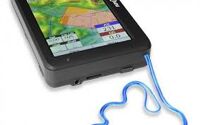It's not really like going snowboarding for the first time, paragliding experience takes time. So don't rush it or get too ambitious. You need to ask yourself what type of flying you aim to be doing.
Balance ambition with reality
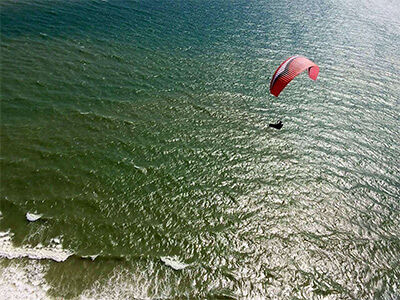 Hike & Fly - Xc - Acrobatics - Coastal soaring - Paramotoring - Speed Flying...
Hike & Fly - Xc - Acrobatics - Coastal soaring - Paramotoring - Speed Flying...
There so much to do but ask yourself how much real-time can you put aside to fly, do you work flexible hours, only have weekends, have a family life to juggle, possibly just one paragliding holiday a year or are you giving up work and travelling the world.
Once Qualified, you'll be working on basic ground skills, like reverse launch skills, keeping current and building in the mix of decisions that make a great day out. Every good instructor knows you get more done on the right equipment that doesn't tax you too much mentally. Never taking on too much stress is key and so is being realistic about your goals.
Hike & Fly
If you are surrounded by big hills with long carry ups then there's ample choice in the lightweight market that gives you some really accessible 10 kg packs, just be careful not to go complete Red Bull X alps on your first choice. When we are new we all make mistakes, back protection is really essential, so get something with an airbag if your concerned about bulk, but don't go for the Nappy. You can pick a lightweight reserve and good reversible or airbag harness and easily have a pack of 10 KG 12 kg for the bigger pilot. We talk about the pros and cons of lightweight wings further below.
For the most part, if you're only getting occasional weekends out flying and the odd holiday then take your time and get a good En A as a first glider. Most modern En A' gliders give all the performance you need to fly In thermals and make your first Xcs. Plus they give a better level of security when you go abroad and might find yourself taking off at the wrong time of day or in fruitier conditions you had bought into! Obviously going with seasoned guides will help with all that.
If you're giving up work and travelling the world then a high EnA wing still suits as you'll likely or as not meet a greater variety of conditions and mixture of sites on your travels, if you do other sports like kite surfing or sailing then you might feel comfortable on a similar Low EN B wing. Most Low B gliders are pretty accessible but they do require lots more ground handling so if your short of midweek practise then stick initially with an A glider.
New gliders have all benefitted from the advances in new technology over the last 3 years, En A gliders are now faster and more agile as a result.
One thing is true or maybe two...
We've never had either a low B or En A returned to us that's been worn out by a pilot in its first three years. You always get a fair return on your first wing especially if it's a popular brand, the lesser spotted or less familiar brands are always a little harder to resell.
Sizing 
Different wings like to be flown at different places on the weight range but I think as an easy rule just aimed to be at least in the middle or towards the top end of your glider weight wise.
How do I work my weight re glider size?
Add yourself clothed (?80KG) plus wing(4/6 kg), harness (4-5KG), reserve(2.5kg), helmet, tech, water and chocolate biscuits(?? 2-4 kg)
Generally, on modern gear theses days, I'd expect to add roughly 12-13 kg for small to medium pilot and 15 kg for a larger pilot. That will give you an all-up weight(AUW) which you can then apply to size.
So with our Example above our 80 kg pilot would be looking at an AUW of 93-95 kg so generally a medium wing or a Medium small, depending on manufacturers sizing.
Some manufacturers are subtly different with sizing so best check, hence why FlySpain offer a mix of manufacturers to make sure you get well placed for a wing.
Remember when you start looking at reversible or airbag harnesses, lightweight reserves then you can find a 75-kilo pilot dropping out of the approximate medium-sized paragliders and looking at small or medium-small. Again all brands can vary greatly.
Lightweight options 
Most manufacturers have twigged the popularity in lighter-weight equipment, so you should find that the bigger brands now offer a full fat EnA oR low B and a lightweight version - E.g Mojo 6 or the lighter weight GEO 6, Air Design Easy 2 or their Superlight.
These often shape up into two styles, uber light and semi-lightweight. Your standard wing tends to be around 5 kilos for a medium size. Where's a semi-lightweight will offer 1or 2 kilos less. An uber lightweight may be as less as 1.8 - 2.5 kilos.
The Uber light
Represents the purest Hike and fly Pilot, generally someone with a year or two under their belt, who is familiar with conditions and not stressed about walking down with their gear if it ain't flyable! You can buy glider from 1 - 2.5 kilos in weight, some of them even go up in lift too which seems miraculous. There are single skin gliders that are effortless to launch in nil wind, pack up small and offer a nice mix of sledies to soaring.
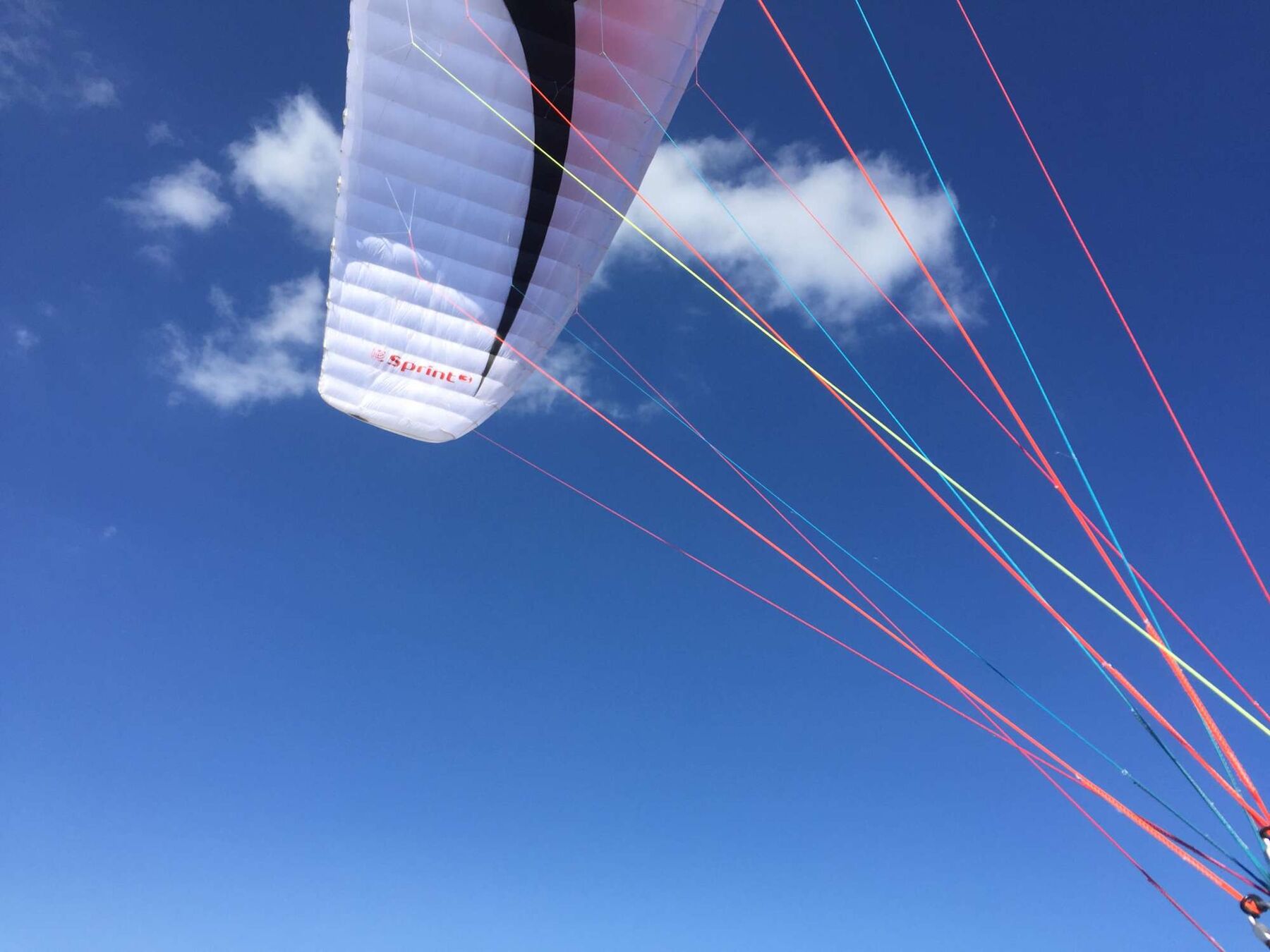 Remember these wings lose weight by a change of line type and thinner materials. The uber light needs some love and respect as they will tear if pulled out of a bush, whereas a full-fat wing won't notice you ragging it around so much.
Remember these wings lose weight by a change of line type and thinner materials. The uber light needs some love and respect as they will tear if pulled out of a bush, whereas a full-fat wing won't notice you ragging it around so much.
Micro lines are great but they do easily snag and are really irritating when you get them caught In thistles or long crops.
Another Con of lightweight gliders is that that can be a handful to launch in stronger winds, not really a problem when you've got time under your belt, so make sure you've enough time to really get stuck into ground handling before you purchase.
Conclusion of sorts
Many pilots have a full fat rig for serious free flying and a lightweight or single skin for walk s up hills or mountains flights in Annecy, it all depends on the level of commitment and lifestyle you have as to what you precisely need - Advice, available at no extra charge at Fly Spain is key.
Choice of risers 
If you're getting a lightweight wing as a first glider the I'd consider going for slim risers as opposed the ultralight string option as they'll play with your uncertainty when you go flying until you've got used to them.
Most important - handling & feel
So lightweight paragliders can be great in flight, they can offer nice handling, a light touch but some can be a little more chatty or busy in thermic air as they pitch about a little more.
The most noticeable side of flying a semi-lightweight is that because there is less weight sitting on the ground they are easy to forward launch in nil or light winds but they equally prove to be a tad more billowy and unstable in stronger winds as they seem to lift up a little easier. So if you don't put the ground handling time into it when you buy one they'll be a right chore when you want to go flying in soarable winds
Needless to say with a well-chosen lightweight glider, a lightweight harness and reserve you can round your kit weight down to sub-ten kilos. Sometimes getting a lighter weight harness can be enough to bring your kit weight down to nearer ten kilos without adding the cons mentioned above.
Getting the right Advice
You should, in theory, be able to ask your instructor if they know much about what you want to buy and can they give you some pointers especially when it comes to sizing. I tend to think that it takes a great deal of effort to gain customers to your door so there's never any need to force a sale or sell them a kipper assuming you want to see them again on a future holiday or course...well that's my theory.
Equally, if you've trusted your health and safety with your instructors why should it end when buying equipment, we like to see you make the right choice whether it be new or second hand.
Needless to say, we sell loads of equipment all over Europe and the U.K. every week. We have a rack of instructors at FlySpain, some with interests in speed or mini wing flying that can be more informed than myself for instance - you can, of course, browse our online paragliding shop for new and used paragliding equipment
So if you need any advice then do feel free to drop us a line

 Hike & Fly - Xc - Acrobatics - Coastal soaring - Paramotoring - Speed Flying...
Hike & Fly - Xc - Acrobatics - Coastal soaring - Paramotoring - Speed Flying...

 Remember these wings lose weight by a change of line type and thinner materials. The uber light needs some love and respect as they will tear if pulled out of a bush, whereas a full-fat wing won't notice you ragging it around so much.
Remember these wings lose weight by a change of line type and thinner materials. The uber light needs some love and respect as they will tear if pulled out of a bush, whereas a full-fat wing won't notice you ragging it around so much.
 [Cross section of foam harness]
[Cross section of foam harness]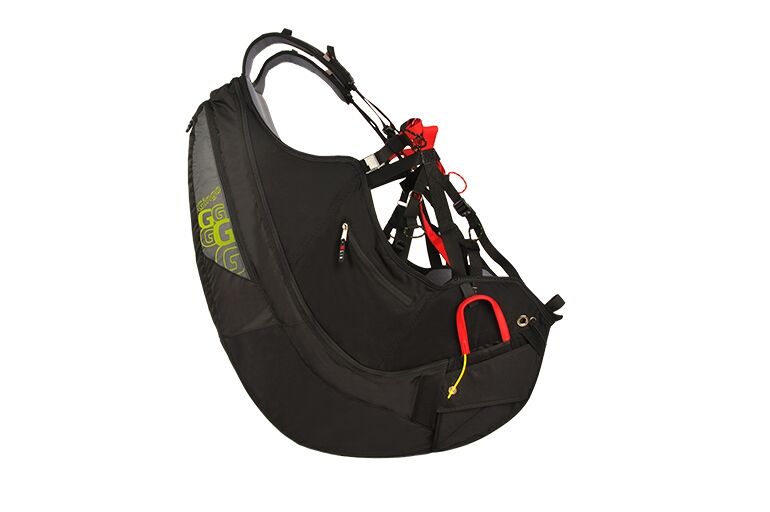



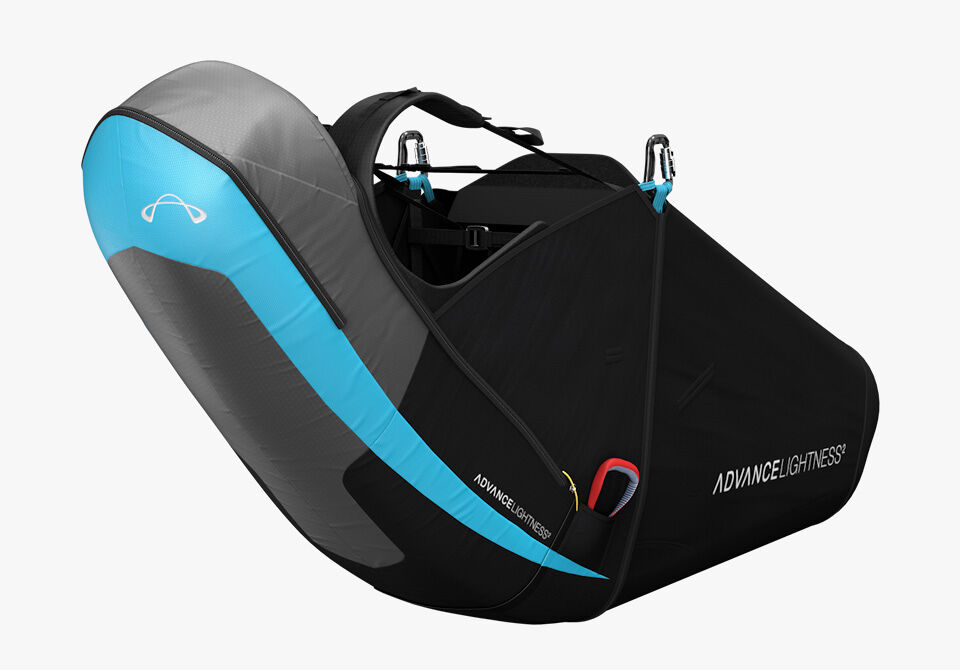 If your upgrading to a higher-performing wing, thermally and making your first Xc, then there a great deal of choice in pod harness. Many have again followed the design of big and uber heavy to lighter and lighter, you'll have to ponder the pros and cons obviously and bear in mind that the lighter some of these options are the less you get in back protection.
If your upgrading to a higher-performing wing, thermally and making your first Xc, then there a great deal of choice in pod harness. Many have again followed the design of big and uber heavy to lighter and lighter, you'll have to ponder the pros and cons obviously and bear in mind that the lighter some of these options are the less you get in back protection.
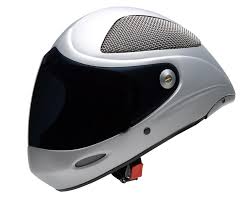
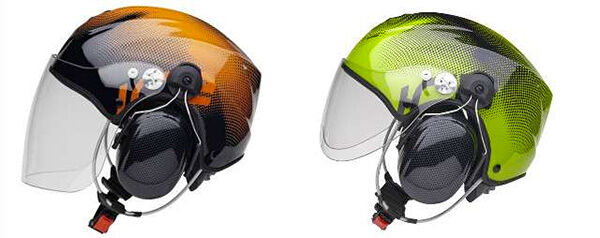 Paramotor helmets
Paramotor helmets 





